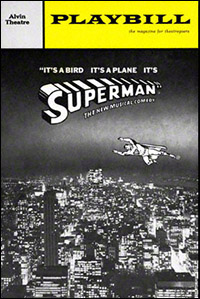
*
He was the first among never quite equals. From the moment Superman burst forth onto the monochromatic world of the Depression in the spring of 1938, heaving a green Studebaker at some baggy-suited malefactors on the cover of "Action Comics" #1, he defined the universe of the superhero. Within months, there were dozens of 10-cent comic books featuring do-gooders in capes and tights; within a year, these new costumed adventurers were selling millions of copies every month to 11-year-olds across the nation.
Yet, even in the wake of this publishing phenomenon, Superman zoomed to the forefront. Within the first decade of his existence, Superman was the first comic book superhero to be given a daily syndicated comic strip; the first to be given his own radio show; the first to be featured in animated cartoons; the first to have a primetime television series; the first to — well, you get the picture. So, it's only fitting that some four decades before another Spandex-clad superhero got tangled up in blue (and red) in the fly space of the Foxwoods Theater, Superman was also the first to get his own Broadway musical: the 1966 It's a Bird...It's a Plane…It's Superman.
In many ways, Superman is an ideal subject for a musical. Comic books and musicals are purely American creations; both are colorful, larger-than-life, and embrace a "nothing-can-stop-me-now" optimism. Indeed, the character was created in the depths of the Depression by two twentysomething Jewish kids from Cleveland with the kind of aspirations and determination that could have been bottled and sold for a Broadway musical. Jerry Siegel, the writer, and Joe Shuster, the artist, spent five years of ongoing rejection by every national newspaper syndicate in their attempts to see Superman in print. Eventually, Detective Comics, Inc., in a desperate effort to fill 13 of the 64 pages of a new comic book, bought the rights to Superman — for a work-for-hire fee of $130. Siegel and Shuster continued to script and illustrate his exploits into the late 1940s, while Superman flew up, up, and away into the stratosphere of American popular culture.
 |
||
| Playbill cover from the original Broadway production |
Of course, the collaborators had another ace up their leotards: one of the great love stories of modern mythology. Star reporter Lois Lane is hopelessly enamored of our Kryptonian paragon, Superman, unaware that he is Clark Kent. At the same time, Superman keeps up the pretense that his alter ego, Clark Kent, is hopelessly enamored of Lois Lane. It's like a ménage a trois between two people.
By the time It's a Bird…It's a Plane...It's Superman rocketed to Broadway in the early '60s, now produced and directed by the rising Broadway maestro Harold Prince, the prevailing winds streaking past our hero had begun to change. Comic books were starting to become hip. Andy Warhol and Roy Lichtenstein had been using a new style called Pop art, which traded on the bold colors, innocent resonance, and commercial acceptance of comic books (in fact, Warhol's first big break came in 1961 when he exhibited a huge silkscreen of — you guessed it — Superman).
The Broadway version of Superman's exploits allowed various preoccupations of the 1960s to fill the background of its musical panels: atomic power, the Cold War and the fear of Communism, the rising cult of celebrity, psychoanalysis, as well as a general ambivalence about the role of heroes in a post-Camelot world — but it was all set to the rollicking energy of the era, brilliantly embodied by Eddie Sauter's Metropolis-meets- Vegas orchestrations.
 |
||
| Charles Strouse |
But, fittingly, "the Man of Tomorrow" was ahead of his time. Superman shrugged off the 129-performance defeat of his musical adventure and soon streaked forward to save the day elsewhere: five major motion pictures (the first two co-scripted by Benton and Newman; a sixth is on its way this May); two more successful TV series; a half-dozen animated adventures; and thousands of new exploits in print. Superman has evolved into the most triumphant character in American culture, and this spring's Encores! concert version of It's a Bird...It's a Plan...It's Superman allows fans of both musicals and comic books to see him once again in one of his finest two hours. As his adventures inconclusively conclude: "To be continued . . ."
(Laurence Maslon is an associate arts professor at NYU. With producer Michael Kantor, he is preparing a three-hour documentary, "Superheroes: A Never-Ending Battle," for PBS in the fall of 2013.)
This feature appears in the April 2013 Playbill for City Center Encores!










